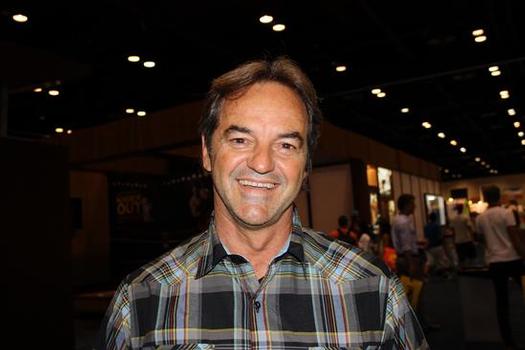Billabong reported its financial results for the year ended June 30 late last week and I spoke with Americas President Paul Naude about the report at Surf Expo.
First, here are the top line highlights. All figures are in Australian dollars.
Total sales: up 23.9 percent to $1.67 billion. In constant currency, sales rose 9.1 percent. Excluding the DaKine acquisition, sales rose 2.8 percent in constant currency.
Net profit after tax: down 9.2 percent to $160.2 million, excluding charges. It was the company’s first profit decline.
Gross profit margins: 53.2 percent vs. 54.9 percent last year. The company cited its commitment to not discounting and maintaining brand equity as helping to maintain margins.
Cash flow: up 14.7 percent to $175.7 million.
Retail: Retail performed well in Australasia and was weak in the U.S. and parts of Europe. The company ended the year with 335 stores, up from 306 at the end of December. Retail accounted for 21 percent of group revenue.
Inventory: Company-wide, inventory excluding DaKine grew by 4.7 percent compared to revenue growth of 3.3 percent in constant currency terms. Retailers continue to order cautiously, and are moving preorders closer to the delivery season, especial in North America. As a result, the company said retailers in the Americas might experience an inventory shortage in key categories leading into the holiday season.
Globally, Billabong sales were slightly positive, Element rose in the midteens, Von Zipper fell mid-single digits, Kustom fell mid-single digits, Nixon had solid double-digit growth, Tigerlily grew 100 percent on a small base and Xcel grew more than 50 percent. Dakine was “really a standout” but is new to the company so there is not a comparative number, CEO Derek O’Neill said in a conference call with analysts.
Overall, North America was the hardest hit because of the recession. I asked Paul how he felt about the North American results. North American sales grew double digits in constant currency, mostly from acquisitions. Excluding the Dakine, Sector 9 and Quiet Flight acquisitions, sales fell 13 percent in U.S. dollars.
In the Americas region overall, EBITDA fell 10.8 percent to $99.9 million. In constant currency, EBITDA fell 28 percent.
“I think under the circumstances, the North American business performed particularly well based on the conditions we had to trade in,” Paul said. “While nobody likes to take a step backwards, we still delivered respectable results and maintained brand integrity and that positions us exceptionally well for the future.”
Paul described what it was like when the economy fell off the cliff last fall, in the first half of Billabong’s fiscal year.
“The decline in business conditions in the first half was severe and rapid and caught every one off guard,” he said. “There was a time lag in how quickly you can respond to reviewing your cost of doing business. Based on the improvement in the second half, clearly we adjusted our business to adapt to the new market condition.”
Other highlights from Billabong’s financial report:
Americas
Americas sales: up 34.9 percent to $836.8 million, or up 12.1 percent in constant currency.
Brand performance in North America: Billabong and Element had mid-teen percentage sales declines, but the declines are “less significant” when PacSun sales are excluded, the company said in its report.
Nixon performed well.
Von Zipper sales fell.
Xcel showed good growth.
Sector 9 and DaKine had strong initial contributions to the group.
Tigerlily, which was recently introduced in North America, had an encouraging initial response from retailers, according to Billabong’s reports.
Sales to Pacific Sunwear continue to decline and accounted for less than 10 percent of group sales in the Americas. “This followed the group’s reluctance to endorse Pacific Sunwear’s shift into a value price driven retail offer,” the company said in a press release.
Americas retail: 111 stores at the end of June, up from 97 at the end of December. Half of the new doors opened in South America.
Europe
Sales: up 23.4 percent to $388 million, or up 9.3 percent in constant currency.
EBITDA: Rose 21.1 percent to $82.4 million. In constant currency, EBITDA rose 5.7 percent.
Sales in Germany and Central Europe were good.
Italy sales did well through the year but softened toward the end of Billabong’s fiscal year.
Currency fluctuations in Eastern Europe weakened consumer-buying power.
Business conditions in the UK are still tough but improved slightly late in the year.
Sales fell in Spain due to the country’s high unemployment.
The Billabong brand held steady in Europe. Element, Von Zipper and Nixon showed strong growth.
Europe ended the year with 81 stores, up from 77 at the end of December.
Dakine is switching from using several European distributors to a mostly direct model in the 2009/10 fiscal year.
Australasia
Sales: up 7.6 percent to $444.3 million, or up 3.9 percent in constant currency.
EBITDA: down 8.8 percent to $100.4 million. In constant currency, EBITDA fell 10.6 percent.
Business in Australia held steady.
Sales at company retail stores were strong, with 143 stores in the entire region, up from 132 at the end of December.
Sales in Japan slowed in the last quarter of the company’s fiscal year, but the rest of Asia performed well.
Sales in New Zealand were “satisfactory.”
South Africa was difficult, especially because of the fluctuation of the Rand.
Company-wide earnings guidance
The company expects Net Profit After Taxes to be flat in the 2009/10 fiscal year.






